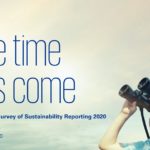
A new report assessing the regulatory landscape for sustainability reporting has found that environmental, social and governance (ESG) disclosure has never been more pervasive globally – and is now firmly in the mainstream of disclosure on organizational performance. As the market implications of certain ESG topics become more evident, interest in the quality of disclosures is also sharpening.
The fifth edition of Carrots & Sticks (C&S) provides an analysis of the latest trends in reporting provisions, covering 614 reporting requirements and resources (a substantial increase on the 383 assessed in the previous report in 2016) across over 80 countries, including the world’s 60 largest economies. A new addition in 2020 is insights and context gathered through interviews with policymakers, who give their views on good practices in phasing in ESG disclosure requirements.
Key findings of C&S 2020 include:
- As a global list of key material topics for our planet, the Sustainable Development Goals (SDGs) have become a global reference for sustainability reporting policy. While explicit reference to the SDGs in disclosure requirements remain limited, they are often implied through the themes addressed. Links to responsible business, employment and accountable institutions (SDGs 12, 16 and 8) are widespread. Reference to public health and education (SDGs 3 and 4) is low, something anticipated to change following the COVID-19 pandemic.
- Europe continues to drive the ESG disclosure agenda, accounting for 245 reporting instruments, while the Asian markets (174) are increasingly active. North America has a low number of reporting provisions (47), a fact that in part reflects the lower number of national jurisdictions in North America. At country level, higher numbers of reporting provisions, including reporting requirements and resources, was found in countries such as the UK, Spain, USA, Canada, Brazil, Colombia and China.
- Most reporting provisions are issued by governmental bodies, rising by 74% since 2016 to almost 400, while engagement by financial market regulators including centrals banks has also grown significantly. Provisions targeting the private sector, and in particular large and listed companies, account for around 90% of the C&S 2020 listing. Provisions that apply to SMEs and the public sector are largely unchanged since the previous C&S stock take of 2016.
- Alignment in the sustainability reporting field is still falling short, with greater collaboration needed between standard setters, reporters, information users, regulators and policymakers, to streamline requirements and improve the quality of disclosure. Related to the reliability of data disclosed, the overview by C&S 2020 illustrates that agreement on the preferred disclosure venue or format, for example a certain type of report or other, is still lacking.
Carrots & Sticks is an initiative of GRI and the University of Stellenbosch Business School (USB), with contributions by the UN Environment Programme (UNEP).
Peter Paul van de Wijs, GRI Chief External Affairs Officer said: “As the pandemic focuses the attention of policymakers on how to achieve resilient and climate-friendly economies, the importance of measuring the impacts of companies and encouraging sustainable practices increases. It is positive therefore that both the range and depth of ESG reporting provisions around the world has grown substantially. Yet questions remain on how to address gaps, particularly in the context of the SDGs, and improve coordination to support more consistent disclosure. To address this twin challenge – spreading the practice of disclosure and driving up the quality – needs strengthened reporting requirements, for which GRI will play an enabling role.”
Cornis van der Lugt, Senior Lecturer Extraordinaire, USB, said: “Stock exchanges and central banks are becoming more active in pursuing non-financial reporting requirements. This shows how the economic and market implications of diverse ESG topics are becoming more evident. The obvious example is climate-related disclosures. After 2020, the systemic implications of public health and infrastructure weaknesses is likely to receive more attention as well. The regulatory landscape both reflects and drives perceptions of what are key material themes. Related is the question of target audience. The landscape continues to display confusion about where best to disclose information and who is supposed to be using different types of information.”



